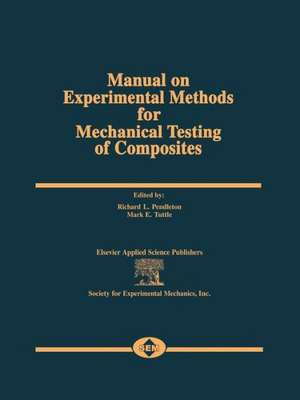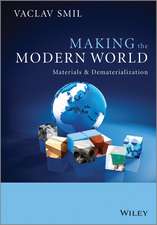Manual on Experimental Methods for Mechanical Testing of Composites
Editat de R. Pendleton, M. Tuttleen Limba Engleză Paperback – oct 2011
Preț: 388.13 lei
Nou
Puncte Express: 582
Preț estimativ în valută:
74.27€ • 77.90$ • 61.83£
74.27€ • 77.90$ • 61.83£
Carte tipărită la comandă
Livrare economică 01-15 aprilie
Preluare comenzi: 021 569.72.76
Specificații
ISBN-13: 9789401070003
ISBN-10: 9401070008
Pagini: 180
Ilustrații: 170 p.
Dimensiuni: 210 x 279 x 9 mm
Greutate: 0.42 kg
Ediția:Softcover reprint of the original 1st ed. 1989
Editura: SPRINGER NETHERLANDS
Colecția Springer
Locul publicării:Dordrecht, Netherlands
ISBN-10: 9401070008
Pagini: 180
Ilustrații: 170 p.
Dimensiuni: 210 x 279 x 9 mm
Greutate: 0.42 kg
Ediția:Softcover reprint of the original 1st ed. 1989
Editura: SPRINGER NETHERLANDS
Colecția Springer
Locul publicării:Dordrecht, Netherlands
Public țintă
ResearchCuprins
Section I Introduction.- Section II A Anisotropie-Material Behavior.- Section II B Classical Lamination Theory.- Section III A Fundamental Strain-Gage Technology.- Section III B Strain Gages on Composites — Gage-Selection Criteria.- Section III C Strain Gages on Composites Temperature Compensation.- Section III D Strain-Gage Reinforcement Effects on Low-Modulus Materials.- Section III E Strain-Gage Reinforcement Effects on Orthotropic Materials.- Section III F Normal-Stress and Shear-Stress Gages and Rosettes.- Section III G Liquid-Metal Strain Gages.- Section IV A-l Geometric Moire.- Section IV A-2 Moire Interferometry for Composites.- Section IV B Shearography: A New Strain-Measurement Technique and a Practical Approach to Nondestructive Testing.- Section V A Acoustic Methods of Evaluating Elastic Properties, or, Will the Real Young’s Modulus Please Stand Up?.- Section V B Acoustic Emission in Composites.- Section VI A Detection of Damage in Composite Materials Using Radiography.- Section VII A Vibrothermography Applied to Polymer Matrix Composites.- Section VII B Adiabatic Thermoelastic Measurements.- Section VII C Damage Evaluation by Laminate Deply.- Section VII E Vibration-Test Methods for Dynamic-Mechanical-Property Characterization.- Section VII F Edge Replication for Laminated Composites.










